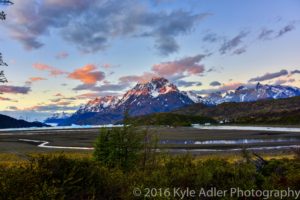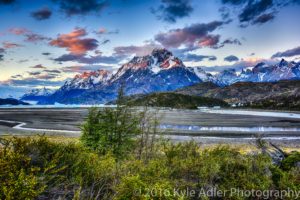In 2012, Nik Software, a small company known for their image processing tools that emulated the look and feel of using old film, was quietly acquired by a somewhat larger company known as Google. This past spring, Google announced they were making the entire suite of Nik tools available for free to all users. I’m just getting around to testing this suite of image editing software now, and from what I’ve seen so far its capabilities are leading-edge and would be well worth spending hundreds of dollars to obtain. It doesn’t do everything, but what it does, it does better than tools such as Photoshop and Lightroom, each of which costs a good deal of money. That Nik’s great capabilities are available for download completely gratis is a wonderful gift from the folks at Google, and I strongly recommend you give them a try.
It’s important to note that the Nik Collection of software tools is not intended to be standalone image processing software. It consists of a set of plugins, each specialized for a different specific purpose, that must be accessed by a general-purpose image editing application such as Photoshop, Lightroom, or Aperture. I use Lightroom for nearly all of my post-processing, so I used that application to access the Nik Collection.
Once you have your general image editing application installed, then you can download the Nik Collection modules for free at this site: https://www.google.com/nikcollection/. When you are working in your application of choice, you will then have access to the various Nik Collection tools in the editing menus. For example, when I select an image in Lightroom, I can access six of the seven Nik modules by pulling down the “Photo” menu and then pulling down the “Edit In” sub-menu. One of the Nik modules, the HDR Efex tool, is accessed instead under the “File” and “Export with Preset” menu choices.
These are the seven Nik Collection modules included in the free download:
Analog Efex Pro
Explore the look and feel of classic cameras, films, and lenses.
Color Efex Pro
A comprehensive set of filters for color correction, retouching, and creative effects.
Silver Efex Pro
Master the art of black-and-white photography with darkroom-inspired controls.
Viveza
Selectively adjust the color and tonality of your images without complicated masks or selections.
HDR Efex Pro
From natural to artistic, explore the full potential of HDR photography.
Sharpener Pro
Bring out hidden details consistently with the professional’s choice for image sharpening.
Dfine
Improve your images with noise reduction tailored to your camera.
So far, I’ve played around with just three of these tools.
Silver Efex Pro did a very good job of converting my test images to monochrome. I’m pretty good at using Lightroom’s tools to convert color images to black-and-white, but they take a lot of practice to master. In Nik’s Silver Efex module I was able to make some good choices very quickly. For those who want to fine-tune their black-and-white conversions, there are very good tools for detailed control over the process.
I used Nik’s Dfine module to attempt to reduce noise in a favorite shot of the Milky Way over Yosemite Valley’s Half Dome. The results of my quick trial looked comparable to what I had done in Lightroom, but I suspect if I took the time to learn the Nik tool more thoroughly, I could end up with even better results.
Finally, I tested Nik’s HDR Efex Pro tool. This little gem is a joy to use. Just select the series of shots from which you want to build an HDR (High Dynamic Range) image, export them to HDR Efex, and click a couple of buttons to generate the base HRD image there. My default image looked pretty good, but the Nik tool has a wide range of presets that allow you to generate different HDR effects with the click of a button. I tried several of these presets until I found one that perfectly suited the scene. A few more small tweaks using the detailed adjustment sliders, and I was ready to save the HDR image back into Lightroom. In the past I have been very disappointed with Lightroom’s built-in HDR tools, and only slightly more satisfied with Photoshop’s HDR module, but the Nik HDR Efex Pro plugin does an amazing job. It’s both easier to use and generates better results than the other HDR software I’ve used. Specifically, the Nik tool does a much better job than the other tools at producing natural-looking colors and at removing the “ghosting” effects from when the underlying images are just a little bit different from one another. Now I’m eager to find the time to go back to some of my favorite HDR images and rebuild them using the Nik software!
For comparison, here is a favorite HDR image of mine, first shown after processing in Photoshop’s HDR tools and then shown after processing in Nik’s HDR Efex Pro tools.
 This HDR image of Lago Grey with its glacier and the peaks of Torres del Paine National Park in Chile was processed using Photoshop’s HDR tools. The colors appear unnaturally saturated and parts of the image (especially the tops of the mountains and the brush in the foreground) show some ghosting effects.
This HDR image of Lago Grey with its glacier and the peaks of Torres del Paine National Park in Chile was processed using Photoshop’s HDR tools. The colors appear unnaturally saturated and parts of the image (especially the tops of the mountains and the brush in the foreground) show some ghosting effects. This version was processed using the Nik Collection’s HDR Efex Pro tools. The colors look much more natural and all parts of the image appear sharp and free from ghosting.
This version was processed using the Nik Collection’s HDR Efex Pro tools. The colors look much more natural and all parts of the image appear sharp and free from ghosting.I am looking forward to revisiting many of my favorite images and reprocessing them using the Nik Collection’s tools. I highly recommend this versatile, easy-to-use, and powerful suite of image editing modules. And the price can’t be beat.
Have you used the Nik Collection for your own photography? What do you like and dislike? Please share your thoughts here.
 This HDR image of Lago Grey with its glacier and the peaks of Torres del Paine National Park in Chile was processed using Photoshop’s HDR tools. The colors appear unnaturally saturated and parts of the image (especially the tops of the mountains and the brush in the foreground) show some ghosting effects.
This HDR image of Lago Grey with its glacier and the peaks of Torres del Paine National Park in Chile was processed using Photoshop’s HDR tools. The colors appear unnaturally saturated and parts of the image (especially the tops of the mountains and the brush in the foreground) show some ghosting effects. This version was processed using the Nik Collection’s HDR Efex Pro tools. The colors look much more natural and all parts of the image appear sharp and free from ghosting.
This version was processed using the Nik Collection’s HDR Efex Pro tools. The colors look much more natural and all parts of the image appear sharp and free from ghosting.
